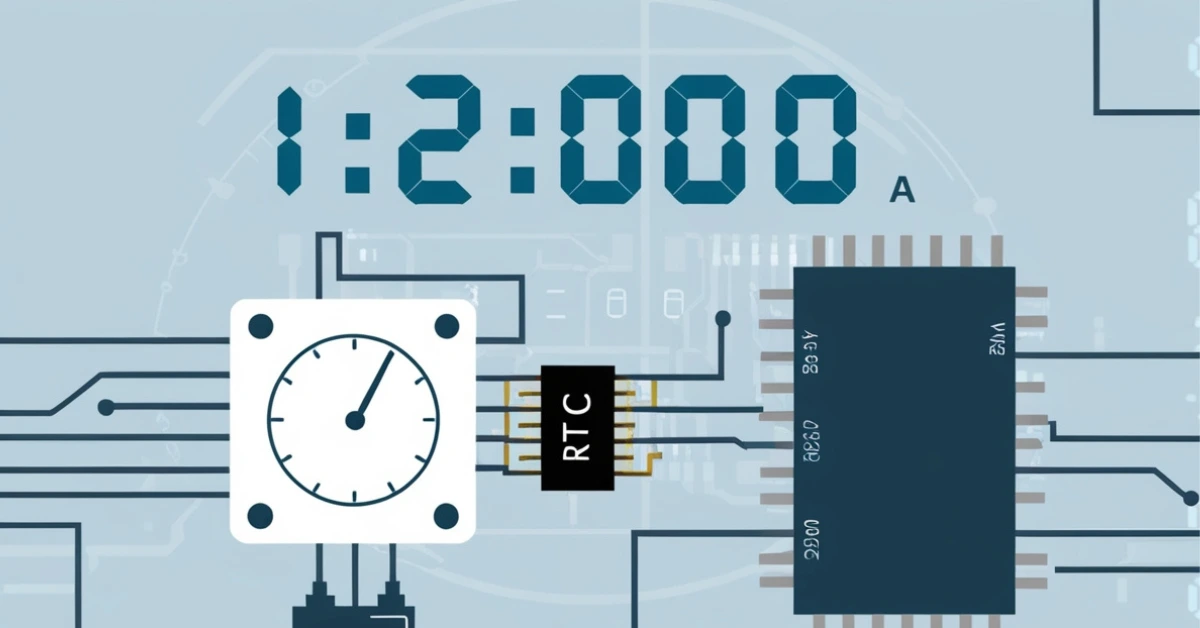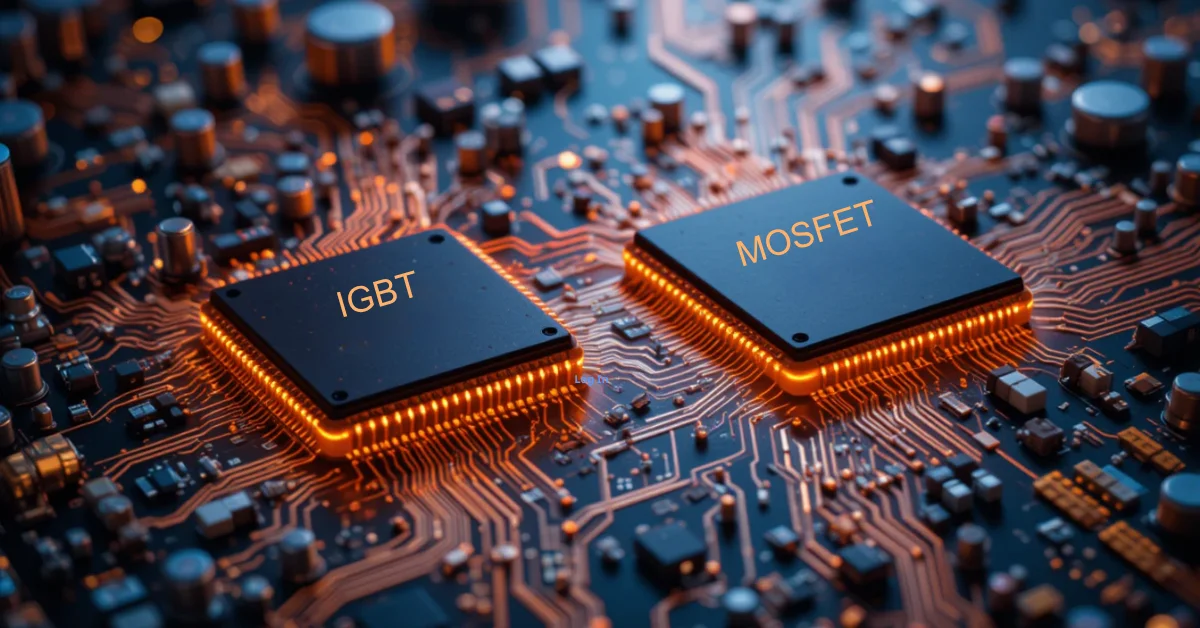We rarely stop to think about how our devices always display the correct time. Your computer boots up and shows the right date. Your phone wakes you with an alarm even after a restart. All this is possible because of a small but essential component inside these systems: the RTC, or Real-Time Clock.
What Does an RTC (Real-Time Clock) Do?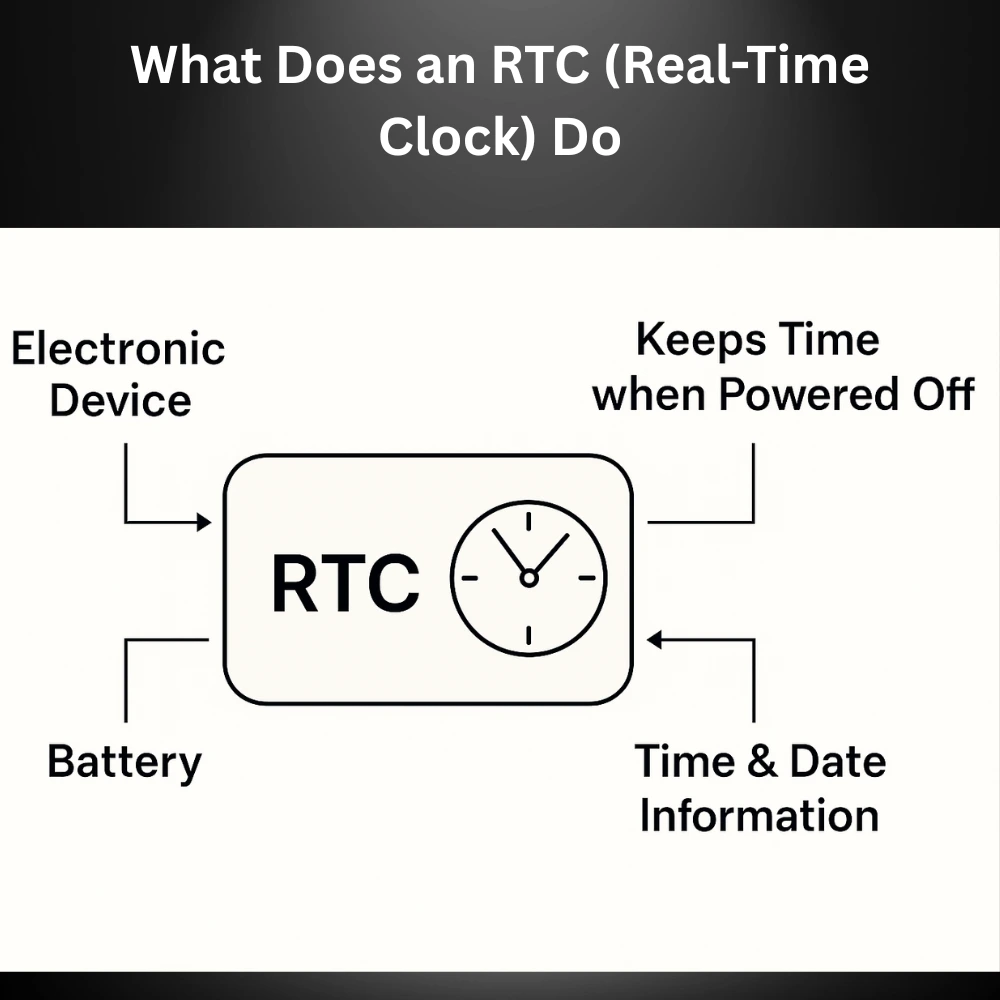
An RTC is a tiny, specialized clock built into many electronic devices. Its job is to keep accurate time and date information even when the main device is powered off. While your smartphone, computer or smartwatch does a lot of things, the RTC focuses on just one job also keeping track of time with precision and reliability.
Why Do Devices Need an RTC?
Most electronic devices don’t run 24/7. They turn off, reboot or go to sleep. But we still need them to “remember” the current time and date when they’re turned back on. That’s where RTCs come in.
Here’s why RTCs are needed:
- RTCs keep tracking time: even when the main device is turned off, thanks to a tiny backup battery that powers them continuously.
- Power Efficiency: They use extremely low power, making them perfect for battery-operated devices.
- Accuracy: A properly built RTC can maintain precise timekeeping for several years without major adjustments.
- Essential for Scheduling: Many systems use RTCs to schedule tasks, wake up from sleep, or activate alarms.
Without an RTC, your device would forget the time every time it loses power.
How Does an RTC Work?
An RTC is an independent hardware component that operates separately from the main processor.
- A Quartz Crystal Oscillator: This crystal vibrates at a fixed frequency (often 32.768 kHz), which helps count seconds precisely.
- A Counter Circuit: It counts the oscillations and converts them into seconds, minutes, hours, days, etc.
- A Small Battery or Capacitor: This powers the RTC chip even when the main system is off.
- Communication Interface: RTCs often use protocols such as I2C or SPI to communicate with the main system.
The moment you set the time, the RTC begins counting from that point forward even if the rest of the device shuts down.
Common Features of RTC Chips
Modern RTC chips often come with helpful built-in features, such as:
Tracks time across seconds, minutes, hours, days, weeks, months and years.
- Leap year adjustment
- 12 hour or 24 hour format
- Alarm or timer function
- Temperature compensation for higher accuracy
- Non volatile memory to store data like settings
Some RTCs also include a temperature sensor or interrupt output for added functionality in embedded systems.
Key Characteristics of an RTC
| Feature | Description |
|---|---|
| Main Function | Keeps track of time and date even when the device is powered off |
| Power Source | Small coin cell battery or capacitor |
| Common Frequency | 32.768 kHz (quartz crystal oscillator) |
| Time Units Tracked | Seconds, minutes, hours, days, months, years |
| Communication Interface | I2C, SPI (connects to microcontroller or processor) |
| Power Consumption | Extremely low; suitable for battery powered devices |
| Accuracy | Typically within a few seconds per day (improved with temperature compensation) |
| Backup Memory | Some RTCs include EEPROM or SRAM to store additional data |
| Typical Devices | Computers, smartphones, washing machines, security systems, embedded systems |
| Alarm/Timer Support | Many RTCs offer built in alarms and interrupts |
Where Are RTCs Used?
RTCs are used in a wide range of devices and applications. Anywhere you need to track time reliably, there’s probably an RTC working behind the scenes.
Examples of Devices That Use RTCs:
- Computers and Laptops: Maintain time and BIOS settings even when powered off
- Smartphones and Tablets: Keep the time during battery changes or reboots
- Alarm Clocks and Watches: Essential for keeping track of alarms and displaying time
- Home Appliances: Like microwaves, washing machines and ovens that include timers
- Security Systems: Use RTCs to log events with timestamps
- Data Loggers: Record sensor readings with exact time references
- Industrial Equipment: Schedule tasks or monitor machine usage
In embedded systems and IoT (Internet of Things) devices, RTCs are especially common due to their low power needs.
Types of RTCs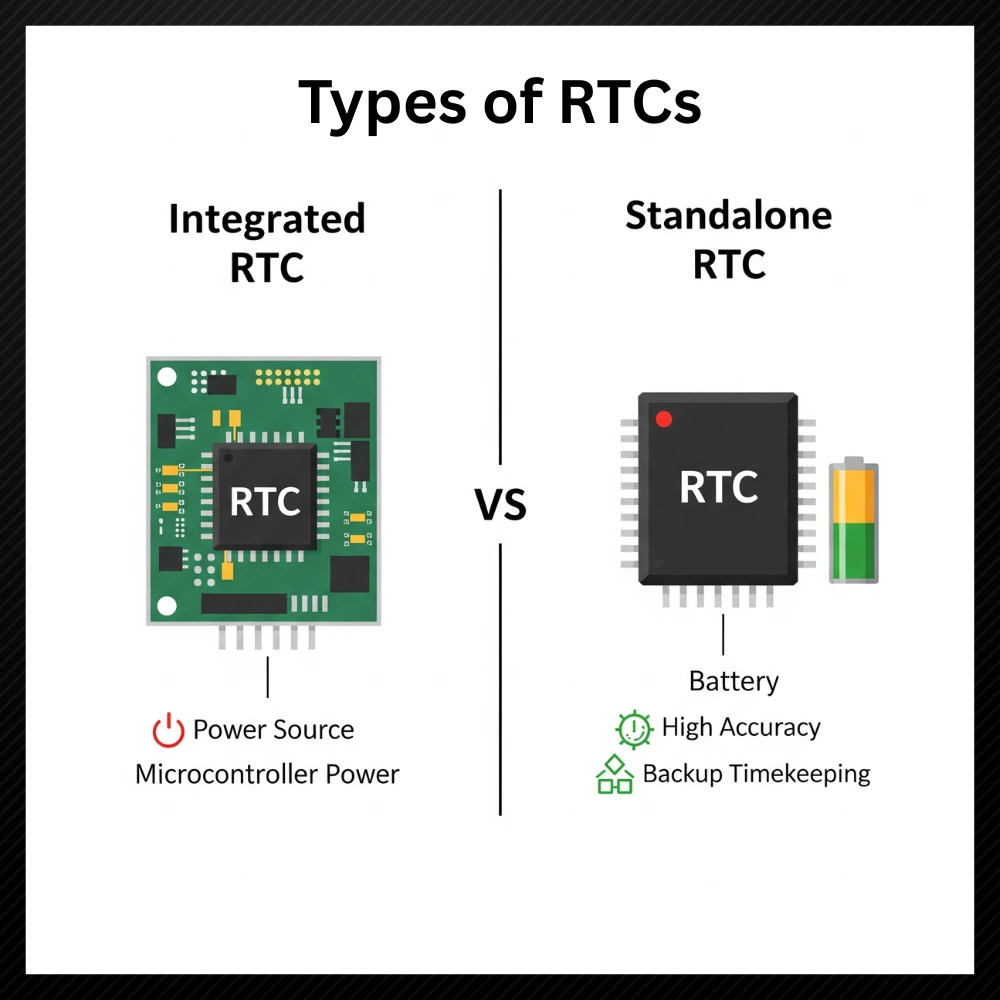
There are mainly two types of RTCs:
1. Integrated RTCs
These are built into microcontrollers (MCUs) or processors. They save space and cost but might rely on the same power source as the main device.
2. Standalone RTC Chips
These are separate components that usually have their own crystal oscillator and backup battery. They are more stable and continue running even if the main board is powered off.
Each type has its own use case. Integrated RTCs are convenient for compact designs, while standalone RTCs are preferred for accuracy and reliability in critical systems.
Benefits of Using an RTC
Adding an RTC to your system has several advantages:
- Reliable Timekeeping: Devices keep accurate time, even during restarts or power loss.
- Low Power Consumption: RTCs consume very little energy, perfect for battery operated gadgets.
- Scheduling Capabilities: Helps systems perform actions at precise times.
- Time Stamped Events: Great for keeping logs in security systems, medical devices or industrial monitoring tools.
Challenges and Considerations
Despite their benefits, RTCs come with a few challenges:
- Crystal Drift: The quartz oscillator may drift slightly over time, affecting long term accuracy.
- Battery Life: If the backup battery runs out, the RTC will stop and time data will be lost.
- Temperature Sensitivity: Oscillator frequency can be affected by temperature changes unless compensated.
To counter these, some advanced RTCs include temperature compensation and calibration options to maintain long term accuracy.
How to Set and Read an RTC?
In most systems, RTCs are controlled using code. For example, a microcontroller may use an I2C protocol to:
- Set the Time: Send data to the RTC chip to initialize the time and date
- Read the Time: Fetch current time data for display or logging
- Enable Alarms: Configure the chip to generate an alert at a set time
Many programming platforms like Arduino, Raspberry Pi, and ESP32 offer libraries that make it easy to set up and use an RTC.
Popular RTC Modules and Chips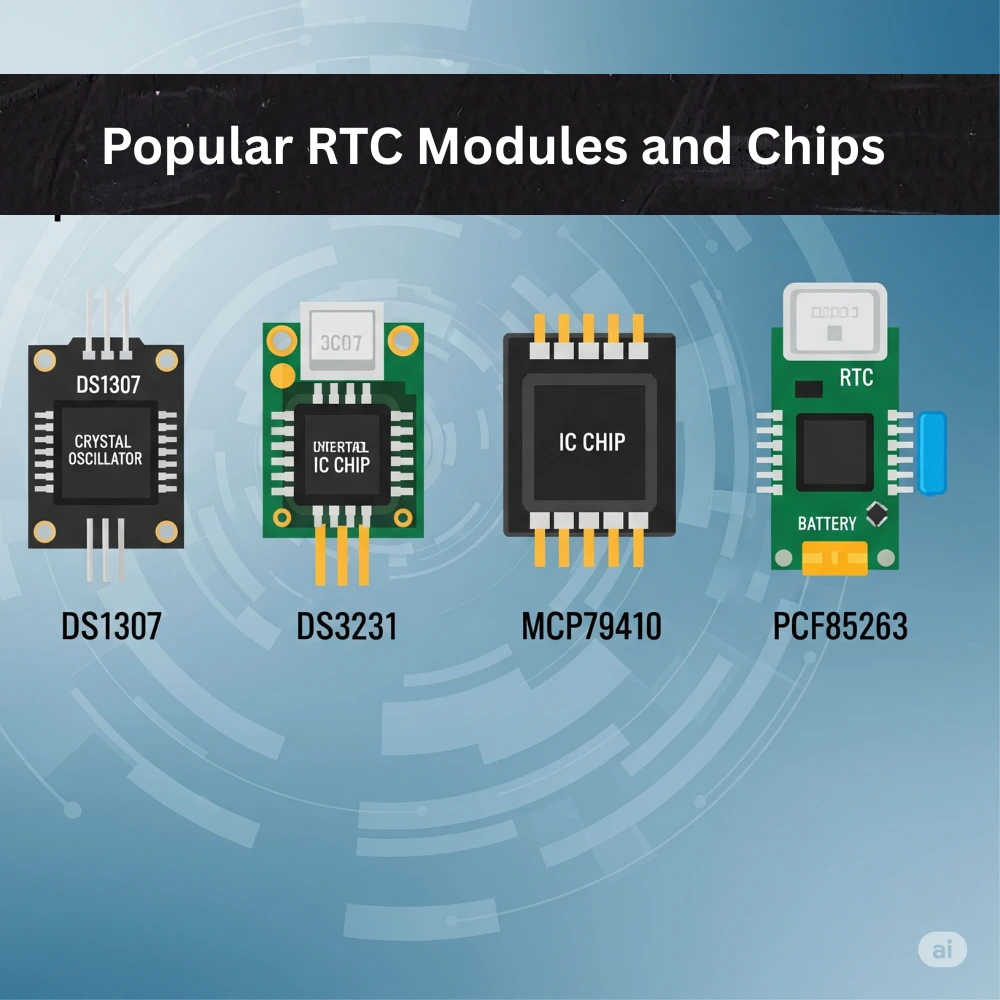
Here are some common RTC chips used in projects and commercial products:
- DS1307: A widely used, inexpensive RTC with I2C communication and battery backup
- DS3231: A more accurate RTC with built in temperature compensation
- PCF85263: Used in automotive and industrial applications for robustness
- MCP79410: Includes EEPROM memory and supports alarms
Each has different features depending on accuracy, voltage, interface, and power consumption.
Conclusion
The Real-Time Clock (RTC) might be small in size, but its role in modern electronics is enormous. Whether you’re using a laptop, setting an alarm on your smartwatch or reading data logs from a sensor system, chances are an RTC is working quietly in the background to keep everything in sync.
